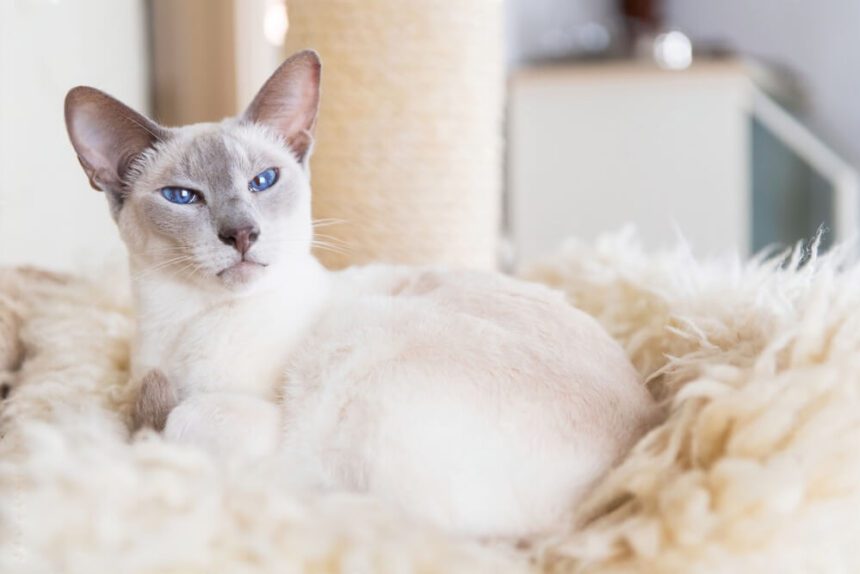Imagine you have a cat only eating 100 calories a day. Sounds a bit alarming, right? Let’s dive into what this means for your furry friend’s health and how you can address this issue to ensure they stay happy and healthy.
Why 100 Calories a Day is Concerning
First off, let’s get real about cats and their dietary needs. Cats are obligate carnivores, which means they rely on nutrients found primarily in animal products. A typical adult cat needs around 200-300 calories per day depending on their size, age, and activity level. So, if your cat is only eating 100 calories a day, there’s a high chance they aren’t getting enough nutrients, leading to various health issues.
Potential Health Issues
- Malnutrition: When a cat’s diet lacks essential nutrients, it can lead to severe health problems such as muscle wasting, weakened immune system, and organ failure.
- Weight Loss: Obvious but crucial to note. Rapid weight loss can be dangerous and indicate underlying health issues.
- Lethargy: Not getting enough calories can make your cat extremely tired and less playful.
- Poor Coat Condition: A diet lacking in essential fatty acids and proteins can result in a dull, dry coat.
Reasons Why a Cat only Eating 100 Calories a Day
Medical Issues
Sometimes, a cat might not eat enough due to health problems. These can include dental issues, gastrointestinal disorders, kidney disease, or even cancer. If your cat suddenly reduces its food intake, a trip to the vet is a must.
Stress and Anxiety
Cats are sensitive creatures. Changes in their environment, like moving to a new home, the introduction of a new pet, or even changes in your schedule, can cause stress, leading to reduced appetite.
Picky Eating Habits
Some cats are just picky. They might not like the flavor or texture of the food you’re offering. Cats can be notoriously finicky, and what they loved yesterday might not be appealing today.
Age-Related Changes
Older cats might eat less due to a decreased sense of smell or taste. They might also have less energy and, therefore, lower calorie requirements.
Solutions and Strategies
Consult with a Veterinarian
This should be your first step. A vet can help identify if there’s an underlying health issue. They can perform necessary tests and provide a diet plan tailored to your cat’s needs.
Enhancing Palatability
If your cat is being a picky eater, try making their food more appealing. This can involve:
- Warming up the food: It enhances the aroma.
- Adding flavor enhancers: Such as tuna water or low-sodium chicken broth.
- Switching brands or flavors: Sometimes, a simple change can reignite their interest in food.
Routine and Environment
- Stable Routine: Keep feeding times consistent. Cats thrive on routine and predictability.
- Calm Environment: Ensure feeding areas are quiet and free from stressors. This might mean separating your cat from other pets during mealtime.
High-Calorie Foods
If your cat isn’t eating much, make every bite count. Look for high-calorie cat foods, often found in pet stores or prescribed by vets, which are packed with essential nutrients.
Frequent, Small Meals
Instead of two large meals a day, try offering smaller, more frequent meals. This can be less overwhelming for a cat with a diminished appetite.
Homemade Solutions and Treats
Sometimes, homemade treats can entice a cat to eat more. Here are a few ideas:
- Cooked Chicken or Turkey: Plain, boiled, or baked without seasoning can be a great, high-protein snack.
- Scrambled Eggs: Occasionally, a small amount of scrambled egg can be a nutritious treat.
- Pureed Pumpkin: Not only is it high in fiber, but many cats also enjoy its taste.
Monitoring and Adjusting
Keep an eye on your cat’s weight and overall health. Regular vet check-ups are crucial. If your cat’s eating habits change or they seem unwell, seek veterinary advice promptly.
Preventative Measures
Ensuring your cat maintains a healthy diet and lifestyle can prevent future issues. Regular exercise, mental stimulation, and a balanced diet go a long way in keeping your feline friend fit and happy.
FAQs
What should I do if my cat refuses to eat altogether?
If your cat stops eating entirely for more than a day, consult your vet immediately. This can be a sign of a serious health issue.
Can stress really affect my cat’s eating habits?
Absolutely. Cats are sensitive to their surroundings, and stress can significantly impact their appetite.
Are there specific foods that can help my cat gain weight?
Yes, high-calorie, nutrient-dense foods can help. Consult your vet for recommendations on the best options for your cat’s specific needs.
How can I make my cat’s food more appealing?
Try warming up the food or adding tasty, safe flavor enhancers like tuna water or chicken broth. Experiment with different textures and flavors to see what your cat prefers.
Remember, a healthy cat is a happy cat. Pay close attention to their dietary needs and consult your vet regularly to keep them in top shape. Happy feeding!
Conclusion
A cat only eating 100 calories a day is a serious issue that requires prompt attention. By understanding the potential causes and implementing effective solutions, you can help your cat return to a healthy, balanced diet. Always remember, the key to a happy cat is a well-fed cat. So, keep those whiskers twitching and that tail wagging with a proper diet and lots of love.
Additional Resources
For further reading on feline nutrition and health, check out:
- American Veterinary Medical Association (AVMA): Great resource for all things pet health.
- International Cat Care: Offers detailed articles on cat health and nutrition.


